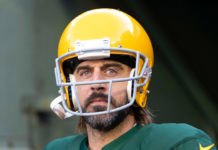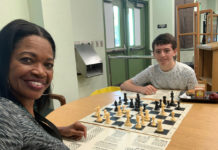Brooke Babineau’s book, “Below Mile Zero,” is about the Key West he lived in during the 1980s. He has written screenplays and poems, too, but his book took some careful soul searching before its finish. Let Brooke tell you about it in his own words.
Q: Give us an elevator pitch for “Below Mile Zero.”
A: Key West is an end-of-the-road town and the reluctant hero, adept at running way from trouble, considered the island safer than New Orleans. Or so he thought until he becomes caught in a deadly power play between ruthless criminals and corrupt government officials trying to find a hidden shipment worth millions. With no place left to go he must fight back, deal with betrayal, and come to terms with his past … or die.
Q: You were in the Keys in the ‘80s, a notorious time, how much of what happened back then made it into your book?
A: It has often been said that truth is stranger than fiction, which is a very small statement to explain a much larger reality. Consider, if you will, the rather bland appraisals of Jeffrey Dahmer by his neighbors, then you get the idea. Most people prefer to reject larger darker truths that lay naked beneath the everyday and commonplace, in this insane world, and may only accept them if carefully masked and labeled as fiction. Think of “Below Mile Zero” as a quilt wherein pieces of whole-cloth reality are cut up then stitched one-next-to-the-other. Fiction is the thread that joins the pieces then embroiders them into a (hopefully) cohesive narrative. Understanding that the difference between truth and fiction is that fiction has to make sense, only a sliver of the shenanigans, misadventures, and escapades that abounded during this outrageous era found their way into the book. Yet, more than half of the book is based upon real events.
Q: Will readers recognize characters in your book?
A: Some may; especially those positive examples of Key West’s cavalcade of actors, jesters, tourists, and residents most of whom are blended into a Mush Molly of exotic and local flavorings. However, I took great pains to protect the guilty, and not only because they have something to hide, even if it’s only their fragile opinion of themselves. In that dark hour of the night the scritch-scratch coming from the backdoor might be nothing or, well, one never knows…does one?
Q: You say it took seven years for you to complete “Below Mile Zero.” Why is that?
A: The short answer is trial and error. For a more complete explanation, we must go back to the fourth grade, when we were tasked to write a one-page story, endowing human emotions to an inanimate object. I had been writing copiously, for my own entertainment, since the second grade and was the first to finish. My opus “The Lament of a Pen” was presented with no small measure of pride. Much to the amusement of my classmates, I was sent back to my desk tasked with a complete rewrite, to correct style issues and turns of phrase that Sister Mary Gertrude (we had other names for her, few were complimentary) found objectionable. Finally, after seven rejections, each of which generated more whispered teasing and taunting, she announced that my story was worthy of her attention. When I simply stated that it was, in fact, now her story, I was given a strapping and sentenced to an after-school detention chore of covering three chalkboards with iterations of my sincere promise to not be disrespectful to my teachers. Fortunately, parochial schools had abolished the death penalty a few months earlier. It wasn’t until I had reached my thirties before I could no longer ignore the volcanic compulsions to commit my ideas and exploits down on paper. Having said all that; after a chance meeting in Key West with author Budd Schulberg (“On the Waterfront,” “What Makes Sammy Run?,” etc.) who became excited by my observations and in how I expressed my perspectives. He wrote the name of his agent on his card and encouraged me to send my completed manuscript to him. Striving to learn and develop the craft and art of converting ideas into words worthy of readers, I worked diligently completing and polishing a presentable draft of “Below Mile Zero,” a novel of Key West until it shone. After clipping Schulberg’s business card to my query letter off it went. My hands were shaking when the reply came from New York. Inside was a form letter advising that “unsolicited material” would not be accepted. Budd’s card was neither mentioned nor returned. Eventually, I found a small publisher in Key West eager to use my work as their industry debut.
Q: What’s your involvement in film?
A: When I first began reading, as a way of avoiding the horror of the family into which I had been born, the words spawned pictures in my mind; moving pictures where I could escape and live vicariously through the exploits and adventures of the characters therein. A unique sequence of events in Atlanta brought me into the world of television, video production, and broadcast journalism where I discovered that movies have a specific format that closely matches how the stories in books play in my mind when I read. One particular working adventure, when I was part of a media feeding frenzy in Union City, South Carolina during the Susan Smith debacle, led to “The Carrion Birds,” my first feature film screenplay.
Q: What is your writing schedule like?
A: Mornings, before any distractions, unless bursting with a dream-spawned story that demands to be written forthwith, I pick up the threads of yesterday’s flow allowing the characters to tell me what they are thinking and show me what they choose or are driven to do. While so engaged, I lose all sense of self completely. Usually, after a three, four, or five hours I begin to notice a rather musky aroma (when fully caught up in the cre8tve current I sweat, heavily, profusely). At that point I take a break, shower down, and make a full 2-cup mug of La Rica espresso, sipping to maintain the adrenaline for the second leg, provided there is more to come. Sometimes the break, shower, and coffee, pass unnoticed and unfulfilled. It’s always a great day if the flow is an irresistible torrent. When that river is drought-plagued, I edit. Going over the previous day’s output, searching for enlightenment, seeking perfection, I’m looking for that one magic rock to turn over that will shatter the dam and set loose the flood.
Q: You offer to donate one-third of the cover price of your book, if bought on your website, to Doctors Without Borders. Why?
A: Someone once accused me of being an idealist; he meant it as an insult; I took it as a compliment. Doctors Without Borders is one of the truly humanitarian groups on the planet today. I could do no less than plead their cause and still respect the person I see in the mirror. One third of the retail book price equals the printing and shipping costs for one copy, so my print publisher and I agreed to each give half of our gross profit to something we believe is worthwhile. What saddens me is that no one has ever accessed that link and bought a single copy to fulfill that pledge. Why? I don’t know.
Q: Are you working on anything now? If so, can you tell us anything about it?
A: Several projects: A rather involved multi-faceted novel that will probably be the first of two volumes with Parts 1 and 2 contained in the first. Since it is a work-in-progress, the details are in a state of flux until it determines its endnote; all I can say with any certainty is that it will give people a very different understanding of dogs. Two new feature-length screenplays, “Nutter” and “2nd Chances,” demanding to be written, interceded and have been added to the roster; the loglines for both can be found on Cre8tve1.com. Also, I’ve just completed a festival short screenplay about violence in our culture, which began as a dream then refused to leave me in peace until it was committed to print. The sequel to “Below Mile Zero” is on the boards, waiting its turn when the present manuscript comes to its natural conclusion. Having received requests to convert some of my screenplays into novels, I tried but discovered that once-written the transcription chore is reminiscent of ‘pulling teeth with tweezers’ hour after interminable hour.
Q: Where can readers find out more about you and your writings?
A: Visit www.absolutelyamazingebooks.com or online is Cre8tve1.com. In the real world, if you can call the wonderland of Key West real, stop in to Key West Artworks and talk to Mike, he’s the owner and an old friend. If he’s in the mood, he can tell you some stories that I might be reluctant to see in print.



























